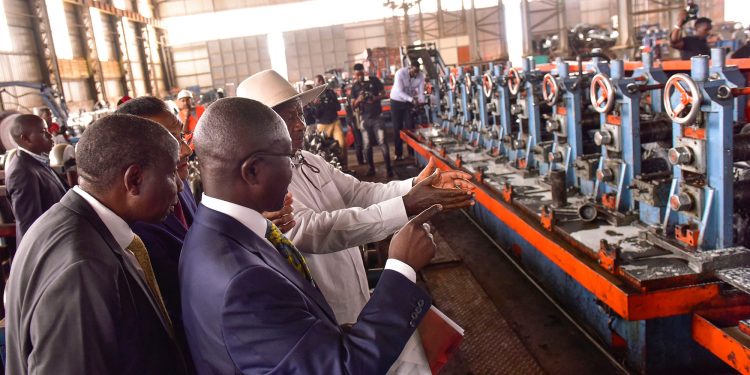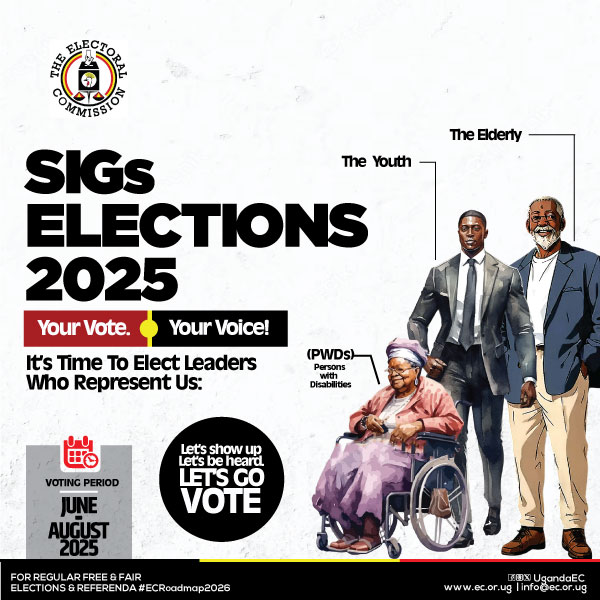After a long legal battle, justice has been served in the case of Phillip Wangala versus Steel and Tube.
The Judge Boniface Wamala of High Court of Uganda, Civil Division, delivered a landmark ruling on April 11th, 2024, holding Steel and Tube accountable for negligence that led to Wangala’s hand injury.
Phillip Wangala, a dedicated machine helper at Steel and Tube, suffered a severe hand injury when it got crushed while on duty.
Despite his years of loyal service, he was later dismissed on medical grounds, leaving him not only physically incapacitated but also without a means of livelihood.
In a bid to seek redress, Wangala took legal action against Steel and Tube, alleging negligence on the part of the company.

Throughout the court proceedings, Steel and Tube attempted to refute Wangala’s claims by falsely asserting that the machine responsible for the injury was equipped with guards.
However, justice prevailed as the truth came to light during the trial.
Judge Boniface Wamala, presiding over the case, meticulously examined the evidence presented and concluded that Steel and Tube’s defense was built on falsehoods.
The court found the company liable for Wangala’s injuries and subsequent dismissal, ruling in favor of the plaintiff.
LIES
“In evidence, the Defendant’s witness, Mr. Gurinder Singh (DW1) introduced a theory that the accident could have been caused by the actions of the Plaintiff in removing the guard while trying to repair the machine. However, this theory was not supported by any facts either in the Defendant’s pleadings or in evidence. DW1 himself stated that he was not on duty at the time of the accident and his evidence thus becomes hearsay. As a matter of fact, the Defendant made no plea of contributory negligence in their WSD. The Defendant is thus not expected to introduce the plea at the time of adducing evidence.”
“The absence of rollers and a guard on the machine was disputed by the Defendant’s witness. Through DW1, the defence produced in court a video of the levelling machine which was alleged to have been the one the Plaintiff was working on, at the time of the accident. The Plaintiff, however, disputed the fact that the machine displayed in the video was the one in issue and stated that this was a more modern machine than the one he was working with. The denial by the Plaintiff is corroborated by the inconsistency in DW1’s evidence. DW1 stated that the machine displayed before the Court had been procured in November 2013 and was installed in 2014. He also stated that the machine that injured the Plaintiff had been in operation for about two years. This would mean that the machine was installed in 2011. I am unable to believe that the machine procured in November 2013 and installed in 2014 was the one that injured the Plaintiff on 14th October 2013.”
“The defense attempted during re-examination of DW1 to undo this inconsistency by alleging that the machine in the video had first been installed on trial and it was only purchased after passing the trial stage. I am, still, unable to believe this defence evidence. The inconsistent defence evidence on the matter is incapable of rebutting the Plaintiff’s assertive description of the nature of the machine he was working with. I am further fortified in this finding by the fact that DW1 clearly told the Court that the video displayed before the Court was made routinely and for marketing purposes. It thus had no connection with the incident herein in issue and cannot be used to negate the Plaintiff’s evidence.”
As a result of the court’s decision, Steel and Tube has been ordered to compensate Wangala for the damages suffered, including a significant sum for general damages.
Additionally, the company has been directed to pay interest on the awarded amount at a rate of 10% per annum from the date of judgment until full payment.
This ruling serves as a reminder to all companies of the importance of upholding safety standards in the workplace and treating employees with fairness and dignity.
Negligence will not be tolerated, and those responsible will be held accountable for their actions.

The victory in Wangala’s case is not just a triumph for him personally but also a victory for justice and accountability. It sends a clear message that individuals have the right to seek recourse when subjected to harm due to the negligence of others, and that the courts are committed to ensuring that such grievances are addressed.
As Wangala begins the process of receiving the compensation rightfully owed to him, it is hoped that this case will serve as a catalyst for positive change in workplace safety practices and employee rights across the country.





